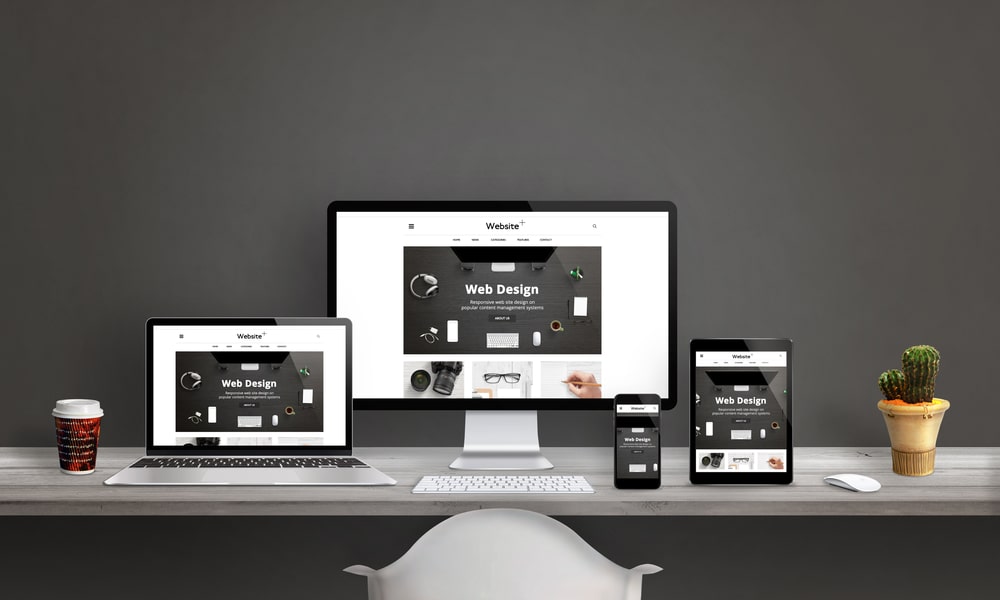Are you a small or medium-sized business owner looking to enhance your online store’s design? Creating a custom SuiteCommerce theme can give your eCommerce site a unique and professional look. In this beginner’s guide, we will explore the process of designing, building, testing, and deploying your custom theme for SuiteCommerce. Get ready to showcase your brand with an eye-catching online store that stands out!
Understanding SuiteCommerce
is essential for SMB owners looking to create a custom online store. SuiteCommerce offers B2B and B2C applications, allowing businesses to build complete and basic eCommerce websites tailored to their needs. By creating a custom theme, you can enhance your online store’s visual appeal, brand identity, and user experience, providing numerous benefits for your business.
What is SuiteCommerce?
SuiteCommerce is a complete eCommerce solution that combines B2B and B2C applications in one platform. It offers a range of features, from basic online store functionality to advanced customization options. The key components of a SuiteCommerce website include product catalogs, shopping carts, payment processing, and customer management. With SuiteCommerce, you can build a fully functional and customized online store that meets the specific needs of your business.
Why choose SuiteCommerce for your online store?
- Benefits of using an integrated eCommerce solution: SuiteCommerce provides complete and seamless integration of applications, making it easier to manage both B2B and B2C transactions in one platform.
- Scalability and flexibility of SuiteCommerce: Whether you have a basic online store or a growing enterprise, SuiteCommerce offers the scalability to accommodate your business needs. Its flexible architecture allows for easy customization and expansion as your business evolves.
Built-in SEO capabilities: With SuiteCommerce, you can immediately build an optimized online store for search engines. Its built-in SEO capabilities ensure that your products are easily discoverable by potential customers, helping drive more organic traffic to your site.
Benefits of creating a custom SuiteCommerce theme
Enhanced brand identity and differentiation:
- A custom SuiteCommerce theme allows you to build a unique online store that reflects your brand’s identity, setting you apart from competitors.
- Tailor your website design to match your brand’s aesthetics, colors, and typography for a cohesive and memorable user experience.
Better user experience tailored to your target audience:
- By creating a custom SuiteCommerce theme, you can optimize the layout and functionality of your online store specifically for B2B or B2C applications.
- Improve navigation and streamline the purchasing process based on the preferences of your target audience.
Opportunity for unique design elements and aesthetics:
- With a customized theme, you have complete control over your online store’s appearance. Add personalized design elements that align with your business goals.
- Stand out with visually appealing graphics, animations, or interactive features that engage customers.
Getting Started

Setting up your SuiteCommerce development environment is the first step in creating a custom theme. Install software and tools like Node.js and SDF CLI to ensure smooth development. Familiarize yourself with the SuiteCommerce file structure to effectively organize and navigate through your project files.
Choosing a design approach is crucial for creating an outstanding custom SuiteCommerce theme. Decide whether you want to start from scratch or use an existing theme as a base. Consider factors like branding, user experience, and customization flexibility when making this decision.
Setting up your SuiteCommerce development environment
Installing the SuiteCommerce Developer Tools is the first step in setting up your SuiteCommerce development environment. These tools provide the necessary resources and functionalities to customize your online store. Once installed, you can begin configuring your local web server to ensure smooth and efficient development. Additionally, setting up a version control system allows for seamless collaboration and easy tracking of changes to your theme files. Following these steps, you can create a robust development environment for building a custom SuiteCommerce theme.
Understanding the SuiteCommerce file structure
Exploring the core files and folders is essential in understanding the SuiteCommerce file structure. By examining these elements, you can gain insight into how different components interact and contribute to the overall functioning of your online store.
Understanding the module hierarchy is key when navigating through the SuiteCommerce file structure. Recognizing how modules are organized within folders allows for efficient customization and troubleshooting, ensuring the smooth operation of your custom theme.
Identifying key configuration files provides vital information on tailoring your SuiteCommerce theme. These files control various aspects such as layout, styling, and functionality, enabling you to create a unique and personalized online store experience for your customers.
Choosing a design approach
Choosing the right design approach for your online store is crucial in creating a custom SuiteCommerce theme. Consider the following factors when making this decision:
- Customizing an existing theme or building from scratch
- Mobile responsiveness in your design strategy
- Researching best practices for user experience and interface design
Each of these elements plays a significant role in shaping your online store’s overall look and functionality. By carefully considering these aspects, you can ensure that your custom SuiteCommerce theme meets your business needs and customer expectations.
Designing Your Custom Theme
Defining your brand identity is the first step in designing your custom theme. Consider your target audience, values, and unique selling points to create a visual representation that resonates with your customers.
Creating a wireframe and mockup will help you visualize the layout and structure of your online store. Start by sketching out the key elements, such as navigation menus, product categories, and promotional banners, to ensure a seamless user experience.
Choosing and customizing the color scheme is crucial for creating an aesthetically pleasing website that aligns with your brand. Select colors that evoke emotions consistent with your brand personality while ensuring readability and accessibility for all users.
Selecting and arranging the layout involves organizing content in a logical manner that guides visitors through their shopping journey. Balance aesthetics with functionality by placing important elements above-the-fold while maintaining clean spacing between sections.
Customizing typography and fonts can elevate the overall look of your online store. Choose fonts that are easy to read on different devices while reflecting your brand’s tone of voice.
In conclusion, designing a custom SuiteCommerce theme requires careful consideration of various aspects such as brand identity, wireframing, color scheme selection, layout arrangement, and typography customization. By paying attention to these details from the start, you can create an engaging online store tailored specifically to meet the needs of both you SMB business owners]
Defining your brand identity
Identifying your target audience is crucial in defining your brand identity. Understanding who your customers are and what they want allows you to tailor your messaging and design to resonate with them. Conduct market research, analyze customer data, and create buyer personas to gain insights into their demographics, preferences, and pain points.
Creating a unique value proposition sets you apart from competitors and communicates why customers should choose your brand. Identify the key benefits that make your products or services different and valuable. Highlight these unique selling points in your branding efforts to attract potential customers.
Defining your brand personality helps shape how you communicate with your audience. Determine if you want to be friendly, professional, elegant, or playful – the choice depends on the image you want to portray and how it aligns with your target audience’s preferences.
- Conduct market research
- Analyze customer data
- Create buyer personas
- Identify unique selling points
- Define brand personality
Creating a wireframe and mockup for your store
Sketching the layout of key pages is an essential step in creating a wireframe and mockup for your store. This allows you to visualize the placement of elements such as headers, menus, and content sections. Mapping user flow and navigation helps visitors easily navigate your store, leading them seamlessly from one page to another. Designing product listing and detail pages involves organizing product information effectively, showcasing high-quality images, and incorporating clear call-to-action buttons to encourage conversions.
Choosing and customizing the color scheme
Researching color psychology in eCommerce will help you understand the impact of different colors on customer behavior and emotions. Consider using warm colors like red or orange for call-to-action buttons to create a sense of urgency, while cooler tones like blue or green can promote trust and relaxation.
Select primary, secondary, and accent colors that align with your brand identity and evoke the desired emotional response from your target audience. Use color palettes that complement each other well to maintain visual harmony throughout your online store.
To find the perfect combination, test different color schemes by creating mockups or using design tools. Experiment with variations of hues, saturations, and contrasts to see which resonates best with your brand message. Consider accessibility guidelines, such as ensuring sufficient contrast between text and background for optimal readability.
Selecting and arranging the layout
Evaluating different grid systems allows you to find your online store’s most visually pleasing and user-friendly layout. By strategically placing essential elements like the logo, menu, and search bar, you can enhance navigation and improve user experience. Optimizing whitespace creates a clean and organized design and enhances readability by allowing content to breathe.
Customizing typography and fonts
When customizing the typography and fonts for your online store, choosing fonts that align with your brand identity is important. Consider factors such as readability, style, and how well they complement your overall design. Additionally, take advantage of the customization options available in SuiteCommerce to adjust font sizes, line spacing, and letter spacing for optimal visual appeal.
To further enhance the typography of your store, explore advanced techniques like using different font weights or incorporating decorative elements sparingly. Remember to maintain consistency throughout your website by applying these customizations consistently across all pages and sections. By paying attention to these details, you can create a cohesive and visually appealing online shopping experience for your customers.
Building Your Custom Theme
To build your custom SuiteCommerce theme, you must modify the SuiteCommerce templates. This involves changing your online store’s HTML structure and layout. By understanding the templates available and how they work together, you can create a unique design that aligns with your brand’s identity. Additionally, adding custom CSS styles allows you to customize the look and feel of your store even further, giving it a personalized touch. With these modifications in place, you can enhance the functionality of your online store by incorporating SuiteCommerce extensions that provide additional features and capabilities for an improved user experience.
Introduction to SuiteCommerce modules
Understanding the core concepts of SuiteCommerce is essential for designing your online store. It involves gaining knowledge about its architecture, functionality, and customization options. Once you grasp these fundamentals, you can explore the different modules available in SuiteCommerce. These modules offer various features and functionalities that can enhance your online store’s performance and user experience. However, choosing the right module that aligns with your business requirements and goals is crucial to achieving optimal results for your online store.
Modifying the SuiteCommerce templates
Locating and accessing the template files in SuiteCommerce:
- Template files for SuiteCommerce can be found in the Themes folder of your NetSuite account.
- Access these templates through the SuiteCommerce Configuration record, where you can make modifications to suit your needs.
Customizing the design elements of your theme:
- To customize the design elements of your theme, navigate to the Sass folder within a specific theme.
- Here, you can modify variables such as colors, fonts, and spacing to match your brand’s aesthetic.
Utilizing variables and placeholders in templates for dynamic content:
- Take advantage of variables and placeholders within templates to dynamically display content on your online store.
- Use these features to insert customer names, product details, or other relevant information that will enhance personalization for shoppers.
Adding custom CSS styles
Identifying and modifying CSS files in SuiteCommerce allows you to customize the appearance of your online store easily. You can create a cohesive brand identity that aligns with your business by applying custom styles. Additionally, using media queries for responsive design ensures that your store looks great on any device, providing a seamless user experience.
Enhancing functionality with SuiteCommerce extensions
Researching available extensions for additional features can greatly enhance the functionality of your SuiteCommerce store. By exploring the wide range of options, you can find extensions that add new capabilities, such as advanced search filters, social media integrations, or multi-language support. These extensions improve the user experience and provide valuable tools to maximize conversions and drive sales.
Incorporating third-party integrations into your SuiteCommerce theme allows you to seamlessly leverage existing systems and services. Whether integrating with popular payment gateways, customer relationship management (CRM) platforms, or marketing automation tools, these integrations streamline processes and provide a cohesive experience for you and your customers. By leveraging external solutions within your theme design, you can create a comprehensive online store that meets all your business needs while saving time and effort.
One way to increase sales is by providing personalized customer experiences through SuiteCommerce extensions. With tools like dynamic pricing modules or product recommendation engines integrated into your theme, you can offer tailored offers based on individual preferences or purchasing history. This level of customization enhances engagement and fosters loyalty among customers who feel understood and catered to in their shopping journey.
By researching available extensions for added features, incorporating third-party integrations strategically into your theme design process, and enhancing personalization through SuiteCommerce enhancements, small-to-medium-sized business owners will be able to optimize their online stores effectively.
Testing and Deploying Your Custom Theme
When designing a custom SuiteCommerce theme, it is crucial to thoroughly test your theme on various devices and browsers for optimal performance. This will ensure your online store looks and functions seamlessly across different platforms, providing an enhanced user experience. Additionally, deploying your custom theme to a production environment requires careful consideration and planning. Take the necessary steps to minimize downtime and avoid potential issues during deployment, ensuring a smooth transition for your customers.
Testing your theme on different devices and browsers

Testing your theme on different devices and browsers is crucial to ensure a seamless user experience. Here are some key points to consider:
Testing on desktop computers:
- Check the responsiveness of your theme across different screen sizes.
- Verify that all functionalities work as intended, including navigation menus and forms.
Testing on mobile devices:
- Ensure that your theme adapts well to smaller screens without compromising usability.
- Test touch interactions and gestures for smooth navigation.
Cross-browser testing:
- Test your theme on popular web browsers like Chrome, Firefox, Safari, and Internet Explorer.
- Validate consistent rendering of elements and compatibility with browser-specific features.
By thoroughly testing your custom SuiteCommerce theme across various devices and browsers, you can deliver an exceptional online shopping experience for all users.
Deploying your custom theme to a production environment
Preparing for deployment involves ensuring that your custom theme is fully optimized and free of any errors or bugs. Double-check that all necessary files and dependencies are included and properly configured. Additionally, back up your current production environment to avoid potential data loss during deployment.
To upload the theme to the production server, use a secure FTP connection or an appropriate file transfer method provided by your hosting provider. Carefully follow the instructions given by your hosting provider, ensuring that you place the theme files in the correct directories on the server.
After uploading, activate your custom theme through SuiteCommerce’s backend administration panel. Navigate to the “Themes” section and select your newly uploaded theme from the available options. Confirm activation, allowing customers visiting your online store to experience its refreshed design seamlessly.
Remember: thorough preparation, accurate uploading, and seamless activation are key when deploying a custom SuiteCommerce theme in a live production environment.
Conclusion
In conclusion, implementing a custom SuiteCommerce theme for your online store has several benefits. Firstly, it allows you to create a unique and visually appealing design that aligns with your brand identity. Secondly, it improves user experience and navigation, leading to higher customer engagement and conversion rates.
The next steps to successfully implement your custom theme include collaborating with an experienced SuiteCommerce developer who can bring your vision to life. Additionally, thorough testing and optimization ensure seamless functionality across different devices and browsers. Remember to regularly update and maintain your theme to keep up with evolving trends and technologies in the eCommerce industry. Contact us via our chatbot or email at hello@seibertconsulting.com and via our direct line at 760-205-5440.




